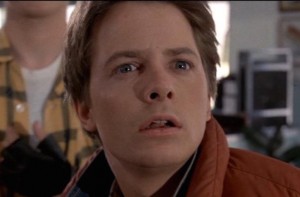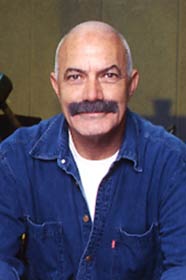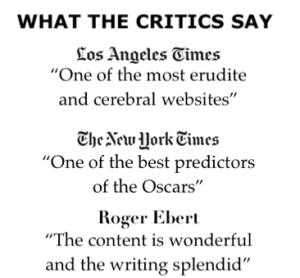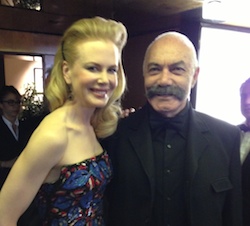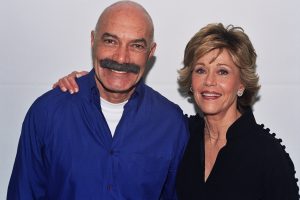The most commercially popular film of 1985, Back to the Future grossed $300 million globally, half of which generated in domestic profits.
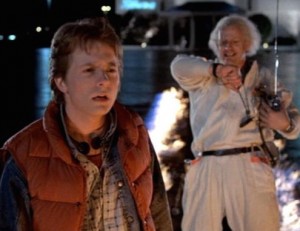 Like many other blockbusters, technical (special effects) and artistic (high-quality acting) distinctions can explain only in part its immense commercial success. Ultimately, though, it’s the film’s thematic issues, charm, and tone, which touching must have touched a chord in the collective consciousness. that catapulted the film to such a level of popularity.
Like many other blockbusters, technical (special effects) and artistic (high-quality acting) distinctions can explain only in part its immense commercial success. Ultimately, though, it’s the film’s thematic issues, charm, and tone, which touching must have touched a chord in the collective consciousness. that catapulted the film to such a level of popularity.
The film is directed by Robert Zemeckis and written by Zemeckis and his reliable collaborator, Bob Gale. Reportedly, the duo wrote the script after Gale wondered whether he would have befriended his father had they attended the same school together.
Most studios rejected the script until the financial success of Zemeckis’ Romancing the Stone, starring Michael Douglas and Kathleen Turner. Zemeckis then approached Spielberg, who agreed to produce at his Amblin Entertainment, with Universal as the distributor.
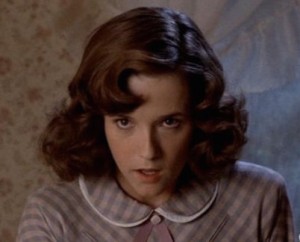 The movie’s unusual appeal derived, at least in part, from its overtly Freudian assumptions. For example, the failure of many kids to believe that their parents were once young like they are now. Or children’s wishful thinking that they are brighter, more knowing, and more in control over their fates than their parents were at their age. At the same time, children would also like to believe that their parents were smart and strong, or at least not dumb.
The movie’s unusual appeal derived, at least in part, from its overtly Freudian assumptions. For example, the failure of many kids to believe that their parents were once young like they are now. Or children’s wishful thinking that they are brighter, more knowing, and more in control over their fates than their parents were at their age. At the same time, children would also like to believe that their parents were smart and strong, or at least not dumb.
In actuality, kids can’t choose their parents, but they can wish or fantasize about having such control, and thus that their parents were once upon a time different. Back to the Future cashes in on one universal wish fulfillment: what happens when children possess the power to choose their parents and transform them into what they perceived to be ideal role models.
Back to the Future was not the only movie in the 1980s to deal with this fantasy: Coppola’s Peggy Sue Got Married (1986), which is concerned with similar issues, was dubbed in Hollywood “Back to the Future for Adults,” despite the fact that its screenplay had been written prior to Back to the Future.
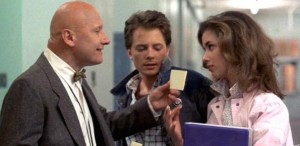 Both films examine small-town life from two time perspectives, past and present. Both are comedies in the vein of Frank Capra (specifically, It’s a Wonderful Life), borrowing some of central ideas and motifs of that 1946 film. The two movies also share similar setting: California in the 1950s. Back to the Future is set in 1955, and Peggy Sue in 1960. The age of their protagonists is also the same: in Back to the Future, Marty is 17; in Peggy Sue, the heroine goes from her early forties back to the age of 18.
Both films examine small-town life from two time perspectives, past and present. Both are comedies in the vein of Frank Capra (specifically, It’s a Wonderful Life), borrowing some of central ideas and motifs of that 1946 film. The two movies also share similar setting: California in the 1950s. Back to the Future is set in 1955, and Peggy Sue in 1960. The age of their protagonists is also the same: in Back to the Future, Marty is 17; in Peggy Sue, the heroine goes from her early forties back to the age of 18.
The first choice to play Marty McFly was Michael J. Fox, but he was busy shooting his TV series, Family Ties, and so Eric Stoltz was cast. During the shoot, the filmmakers realized that Stoltz was the wrong choice, and Fox was again approached. With a more flexible schedule, Fox managed a timetable that allowed him to do both.
Marty McFly, the teenage hero of Back to the Future, is a student at Elmdale High School in Hill Valley, California. A media-minded kid, he owns all the recent technological innovations. We see on his desk all kinds of electronic tools and toys, including a cordless telephone. He is an aspiring musician–the walls of Marty’s room are covered with posters of rock stars and cars (Camaro Z-28).
His family is less ambitious: his father George is bullied by his supervisor, Biff Tannen, while his mother, Lorraine, is an overweight alcoholic who lives in the past, fondly recalling how she met George in school when he was hit by her father’s car. Marty’s parents seem to be victims of suburban stagnation and easy, but uninspired, life. What must have been the American suburban dream of the 1950s has turned into a nightmare in the 1980s.
Marty’s house is in a development called “Lyon Estates,” a row of boring, monotonous houses, stretching toward the high-tension lines on the horizon. The suburban strip includes all the usual chains, like McDonald’s, Dunkin’ Donuts, Kentucky Fried Chicken, and others.
There is one exception to the norm, the house of the lunatic Dr. Emmett Brown (Christopher Lloyd), an old Victorian house in the midst of homogenous buildings. Doc is the last vestige of individualism when it comes to living quarters, lifestyle, and personality. Wearing a white sanitation suit, he is proud of his dog, a huge St. Bernard, named Einstein. Doc’s car, a sleek, stainless steel Delorean, has been remodeled, looking like a toy from Star Wars. At precisely 88 miles per hour, an atomic reaction is triggered, precipitating a miniature nuclear explosion. Caught by terrorists at the shopping mall, Marty jumps into the car, and through Doc’ magic, is transplanted into another world.
 Marty lands in an unknown country: the Peabody farm. Its owners believe his car is a flying saucer from outer space, a reference to a popular phobia in the l950s. Marty finds himself on a two-lane highway, on which a lit billboard proudly states: “Step Into the Future with the All New 1955 Studebaker.”
Marty lands in an unknown country: the Peabody farm. Its owners believe his car is a flying saucer from outer space, a reference to a popular phobia in the l950s. Marty finds himself on a two-lane highway, on which a lit billboard proudly states: “Step Into the Future with the All New 1955 Studebaker.”
It’s Saturday morning, November 5, 1955, to be exact. Tuning in to the radio, Marty listens to a commercial advertising “the best value in the 48 states,” and to Perry Como singing “Papa Loves Mambo.” President Eisenhower has just announced he would seek reelection of office. “Holy shit, 1955,” Marty exclaims, “I haven’t even been born yet!”
A series of surprises and revelations follow. Marty is shocked to realize that his father is a Peeping Tom. While watching with his binoculars from up on a tree a naked girl in the second story, the branch breaks and George tumbles into the street, just as a car is approaching. “Dad, look out,” cries Marty, knocking his father out of the path, and instead the car hits him. Rather characteristically of his father, instead of helping Marty, he leaves him there unconscious. Taken to the bedroom of his mother, Lorraine, Marty awakes up in bed wearing no pants. “They seemed a little tight, so I took them off,” she explains, calling him Calvin, because that’s the name (Calvin Kline) written on his underwear.
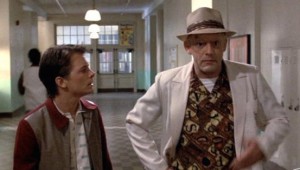 At the end, against great odds, Marty fulfills the ultimate fantasy of every child to control the fate of their parents and supervise his own birth. Moreover, Marty transforms his parents from losers to winners. It’s in this motif that Back to the Future is most grounded in its immediate political and ideological context: Reagan’s obsessive stress on economic success, upward mobility, and good family life.
At the end, against great odds, Marty fulfills the ultimate fantasy of every child to control the fate of their parents and supervise his own birth. Moreover, Marty transforms his parents from losers to winners. It’s in this motif that Back to the Future is most grounded in its immediate political and ideological context: Reagan’s obsessive stress on economic success, upward mobility, and good family life.
Indeed, in the last scene, George and Lorraine, dressed in their tennis outfits, carry themselves with confidence and self-importance. They project the image of a happily married couple. When Marty protests that he can’t go to the lake tonight because his father’s car is wrecked, his father corrects him, “There’s nothing wrong with my car, Biff is out there waxing it right now.”
In another extreme role reversal, the loutish Biff is now diligently waxing a new Lincoln Continental; his rough edges and arrogance have obviously subsided. A uniformed maid brings French toast, as George is talking about his new house and the new car for Marty. The movie also transforms the black hand at Lou’s cafe into a politician running for mayor.
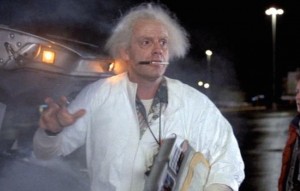 In its up-beat philosophy, Back to the Future shows children’s wishful desire to redefine their–and their parents–reality. The movie reflects the (subconscious) desire of children to play an active part in bringing their parents together and in their own conception.
In its up-beat philosophy, Back to the Future shows children’s wishful desire to redefine their–and their parents–reality. The movie reflects the (subconscious) desire of children to play an active part in bringing their parents together and in their own conception.
For an American film, the narrative of Back to the Future comes amazingly close to portraying incestuous relation between Marty and his mother, who treats him as her romantic interest, It’s a perilous bond that would have threatened his own birth and that he is desperate to prevent–or else.
Finally, despite its energy and optimism, the movie can’t conceal the fact that in 1985, the town lacks a distinct physical identity or a strong moral center–the town as such plays no role in the daily lives of its dwellers. It’s every man or woman for himself or herself, with no need for or expectation of getting involved in social or community life.
Movie Impact or Recycling
The film marked the start of a franchise, with two sequels, the good Back to the future Part II (1989) and the inferior Back to the Future Part III (1990), as well as animated series, theme park rise, several video games, and a musical.
